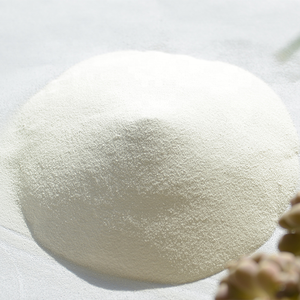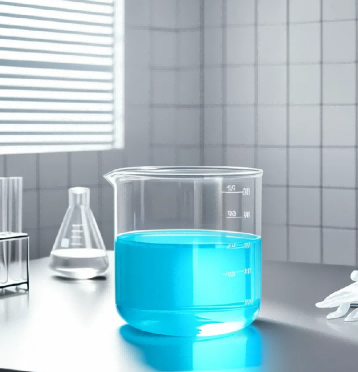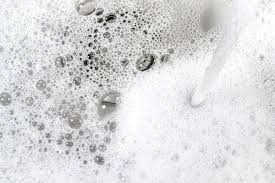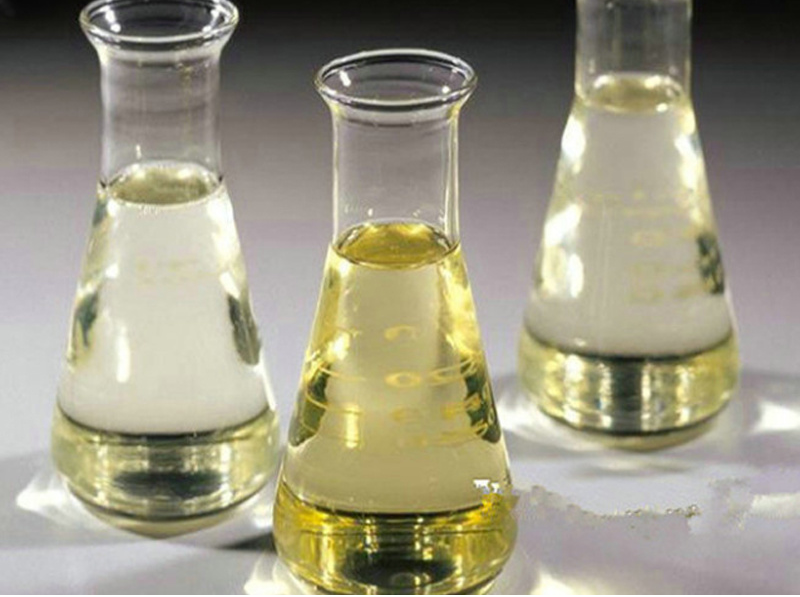In the ever-evolving landscape of chemical options, cationic surfactants stand as an apotheosis of adaptability, revolutionizing sectors from fabrics to farming. These substances, defined by their positive charge and unique molecular structure, are not simply chemical agents– they are gamechangers that redefine performance, sustainability, and effectiveness. Whether you’re a supplier, researcher, or customer seeking cutting-edge products, comprehending cationic surfactants is the key to opening unparalleled value.
1. What Are Cationic Surfactants?
Cationic surfactants are natural substances defined by their favorably charged hydrophilic head group and hydrophobic tail. Unlike anionic or nonionic surfactants, cationic surfactants acquire their name from the cationic (positive) charge they bring in aqueous solutions. This unique building enables them to interact dynamically with negatively charged surfaces, making them important in applications ranging from sanitation to material softening.

The term “cationic” originates from the Greek kation, implying “to go,” reflecting just how these particles migrate toward negatively charged user interfaces. Structurally, they are usually amine salts, quaternary ammonium substances, or phosphonium by-products, each offering customized performance. Their capacity to neutralize unfavorable costs and create steady complexes has cemented their role as important tools in contemporary chemistry.
2. The Principles Behind Cationic Surfactants
The core principle of cationic surfactants lies in their amphiphilic nature– a balance between hydrophilic (water-attracting) and hydrophobic (water-repelling) areas. When liquified in water, the positively charged head groups orient toward the aqueous stage, while the hydrophobic tails accumulation right into micelles, reducing surface area tension and making it possible for phenomenal wetting, emulsification, and antimicrobial properties.
Electrostatic interactions drive this dual capability: the positive fee of cationic surfactants allows them to bind to negatively charged substrates, such as bacterial cell membrane layers or fabric fibers. By interfering with microbial cell wall surfaces or depositing conditioning agents, they provide transformative cause cleansing, preservation, and product enhancement.
For example, in disinfectants, cationic surfactants penetrate microbial membrane layers, destabilizing their structure and preventing development. In fabric handling, they serve as antistatic representatives, stopping fiber complexity and enhancing gentleness. This flexibility underscores their function as keystones of advancement across industries.
3. Physical and Chemical Features of Cationic Surfactants
To harness the full capacity of cationic surfactants, it is necessary to recognize their distinctive residential properties.
3.1Physical Attributes
Appearance: Generally clear, anemic liquids or ceraceous solids, depending upon molecular weight and structure.
Solubility: Highly soluble in water due to the ionic head group; solubility in natural solvents differs.
Viscosity: Varies from reduced (in dilute options) to high (in focused forms), affecting application techniques.
Melting Point: Generally moderate, with exceptions for quaternary ammonium compounds (e.g., CTAB melts at 200 ° C). Chemical Characteristics
Surface Area Stress Decrease: Reduced interfacial stress (typically <30 mN/m) enhances wetting and spreading.
Electrostatic Attraction: Strong affinity for anionic substrates (e.g., clay, proteins, bacteria).
Thermal Stability: Stable under moderate heat, but may degrade at high temperatures (>< 30 mN/m), improving wetting and spreading out. Electrostatic Tourist attraction: Solid fondness for anionic substrata ( e.g., clay, proteins, microorganisms ). Thermal Security: Steady under moderate warm however, may break down at high temperatures( > 250 ° C). pH Sensitivity: Do optimally in acidic or neutral settings; alkaline conditions might minimize efficiency.
These properties make cationic surfactants perfect for precision applications, where regulated interactions and security are critical.
| Category | Parameter | Details |
| Chemical Classification | Chemical Type | Organic compounds with a positively charged hydrophilic head group |
| Functional Groups | Amine salts, quaternary ammonium compounds (QACs), phosphonium derivatives | |
| Common Examples | Cetyltrimethylammonium Bromide (CTAB), Benzalkonium Chloride, C12-18 Alkyl Quaternary Ammonium Salts | |
| Molecular Structure | Hydrophobic Tail | Long-chain alkyl or aryl groups (e.g., C12–C18 hydrocarbons) |
| Hydrophilic Head | Positively charged nitrogen-containing groups (e.g., -N⁺R₃) | |
| Structure Type | Amphiphilic (hydrophobic tail + ionic head) | |
| Bonding | Covalent bonds between hydrophobic and hydrophilic moieties | |
| Physical Properties | Appearance | Clear liquid, waxy solid, or viscous gel (depending on molecular weight) |
| Color | Colorless to pale yellow (no impurities) | |
| Density | 0.9–1.2 g/cm³ (varies with concentration and structure) | |
| Viscosity | 10–1000 cP (dilute solutions: low; concentrated forms: high) | |
| Melting Point | 20–200°C (e.g., CTAB melts at ~200°C) | |
| Boiling Point | >250°C (decomposes before boiling) | |
| Chemical Properties | Surface Tension | <30 mN/m in aqueous solution (enhances wetting and spreading) |
| pH Stability | Stable in acidic to neutral pH (pH 3–7); performance declines in alkaline environments | |
| Solubility | Highly soluble in water; solubility in organic solvents varies | |
| Thermal Stability | Stable up to 200°C; may degrade at higher temperatures | |
| Biodegradability | Varies (some QACs are persistent; newer formulations prioritize biodegradability) | |
| Performance | Antimicrobial Activity | Broad-spectrum (effective against bacteria, fungi, and viruses) |
| Antistatic Effect | Neutralizes negative charges on surfaces (e.g., textiles, plastics) | |
| Corrosion Inhibition | Forms protective films on metal surfaces | |
| Compatibility | Works with anionic/non-ionic surfactants in formulations | |
| Toxicity | Higher toxicity compared to non-ionic surfactants (use in low concentrations) |
4. Benefits and Negative Aspects of Cationic Surfactants
4.1 Benefits
Antimicrobial Excellence: Broad-spectrum task versus bacteria, fungi, and infections, making them cornerstones of disinfectants and preservatives.
Textile Conditioning: Reduce the effects of fixed cost, boost softness, and enhance dye fixation in fabrics.
Corrosion Restraint: Form protective coatings on steel surface areas, expanding devices.
Compatibility: Job synergistically with anionic and nonionic surfactants in multicomponent formulas.
Reduced Poisoning: Numerous cationic surfactants (e.g., benzalkonium chloride) are naturally degradable and skin-friendly in low concentrations.
4.2 Drawbacks
Expense: Greater manufacturing costs compared to anionic surfactants, specifically for quaternary ammonium substances.
Limited Alkaline Use: Minimized performance in highly alkaline environments.
Frothing: May create too much foam in some applications, calling for antifoam agents.
Environmental Problems: Persistent deposits in water ecosystems if not effectively handled.
In spite of these difficulties, advancements in green chemistry and eco-friendly formulas are addressing restrictions, ensuring cationic surfactants stay sustainable and future-ready.

5. Applications of Cationic Surfactants
5.1 Textile Sector
Cationic surfactants are revolutionizing fabric handling by acting as:
Antistatic agents: Avoid fiber complications throughout spinning and weaving.
Softening agents: Enhance hand feeling and durability of textiles.
Dye Fixatives: Boost colorfastness in reactive dyeing processes.
For example, cetyltrimethylammonium bromide (CTAB) is widely use to customize cotton fibers, improving their compatibility with synthetic dyes.
5.2 Agriculture
In agrochemicals, cationic surfactants act as:
Herbicide adjuvants: Improve penetration of active components into plant follicles.
Fungicides: Interfere with fungal cell membranes, protecting against plant illness.
Soil Conditioners: Boost water retention and nutrient levels in arid soils.
Their capability to improve plant returns while minimizing chemical use aligns with eco-conscious farming practices.
5.3 Medical Care and Personal Care
From bactericides to skincare items, cationic surfactants deliver:
Antimicrobial wipes: Battle pathogens in medical facilities and clinics.
Conditioners: Detangle hair and minimize frizz with cationic deposition.
Wound Cleansers: Provide nonirritating, broad-spectrum disinfection.
Products like chlorhexidine gluconate highlight their function in preventing infections and promoting healing.
5.4 Industrial and Environmental Applications
Water Therapy: Remove heavy metals and natural contaminants through adsorption.
Oil Recovery: Boost oil recovery in boosted oil recovery (EOR) procedures.
Repaint Ingredients: Enhance adhesion and sturdiness of finishes.
In environmental removal, cationic surfactants are pioneering solutions for dirt and groundwater decontamination.
6. Why Choose Cationic Surfactants?
In a globe requiring efficiency, sustainability, and development, cationic surfactants supply a paragon of performance. Their capacity to:Boost item top quality in fabrics and farming,Guarantee security in medical care and sanitation,Drive sustainability through biodegradable formulations,makes them crucial to the modern sector. Whether you seek to boost producing processes, establish eco-friendly products, or fix intricate technological difficulties, cationic surfactants provide the ultimate service.
7. Final thought: Embrace the Future with Cationic Surfactants
The trip of cationic surfactants– from clinical curiosity to commercial foundation– mirrors their transformational effect. As technology advances, so also will their abilities, with developments in nanotechnology, biodegradability, and multifunctional formulas pressing boundaries further.
For organizations and researchers, the message is clear: Cationic surfactants are not just chemicals– they are stimulants for development. By integrating them right into your operations, you unlock chances for cost financial savings, performance improvement, and environmental stewardship.
Take the jump today and uncover exactly how cationic surfactants can boost your market.
Supplier
Surfactant is a trusted global Cationic Surfactants supplier & manufacturer with over 12 years experience in providing super high-quality surfactant and relative materials. The company export to many countries, such as USA, Canada,Europe,UAE,South Africa, etc. As a leading nanotechnology development manufacturer, surfactanthina dominates the market. Our professional work team provides perfect solutions to help improve the efficiency of various industries, create value, and easily cope with various challenges. If you are looking for Cationic Surfactants, please send an email to: nanotrun@yahoo.com
Tags: cationic surfactants,cetyl trimethyl ammonium bromide


